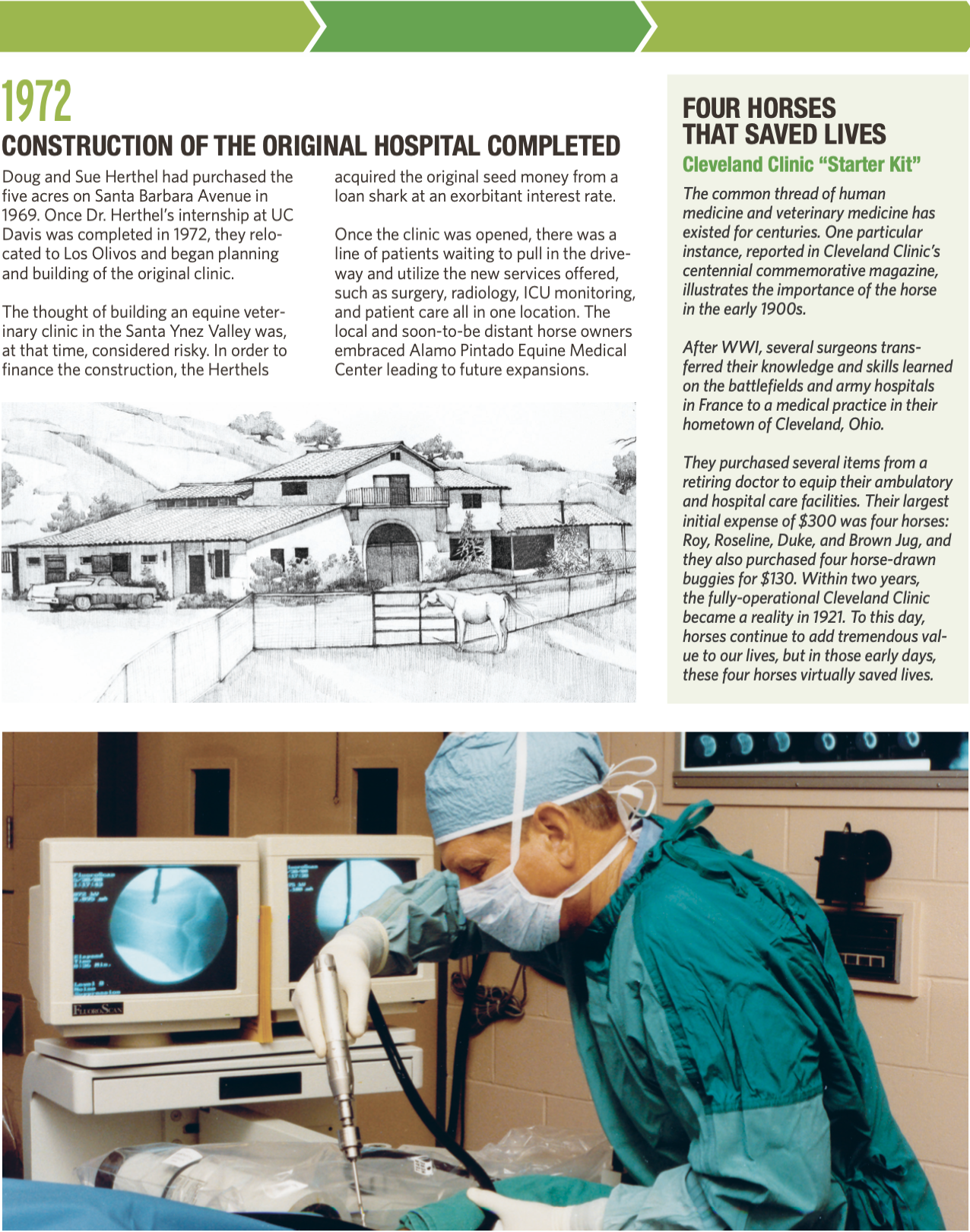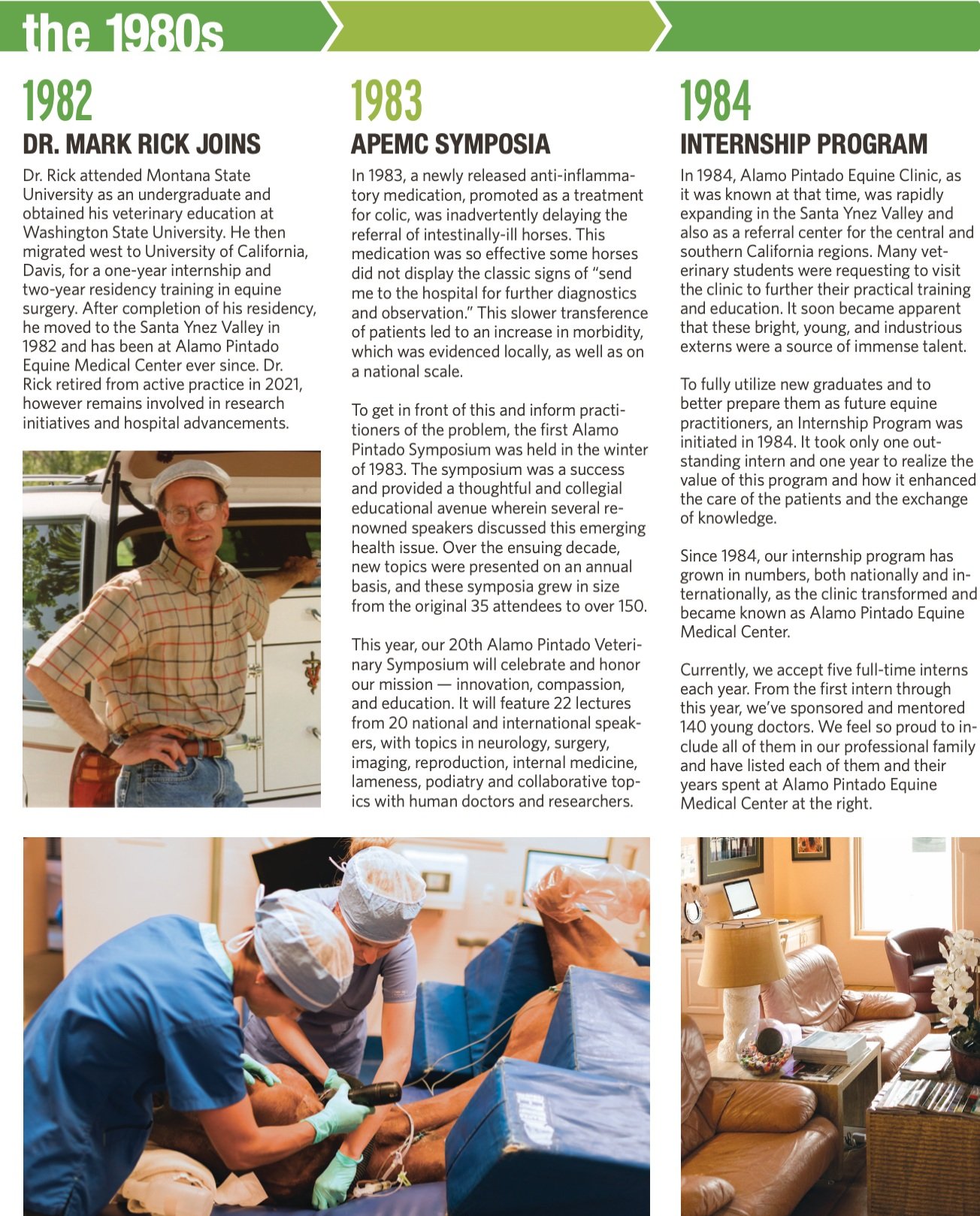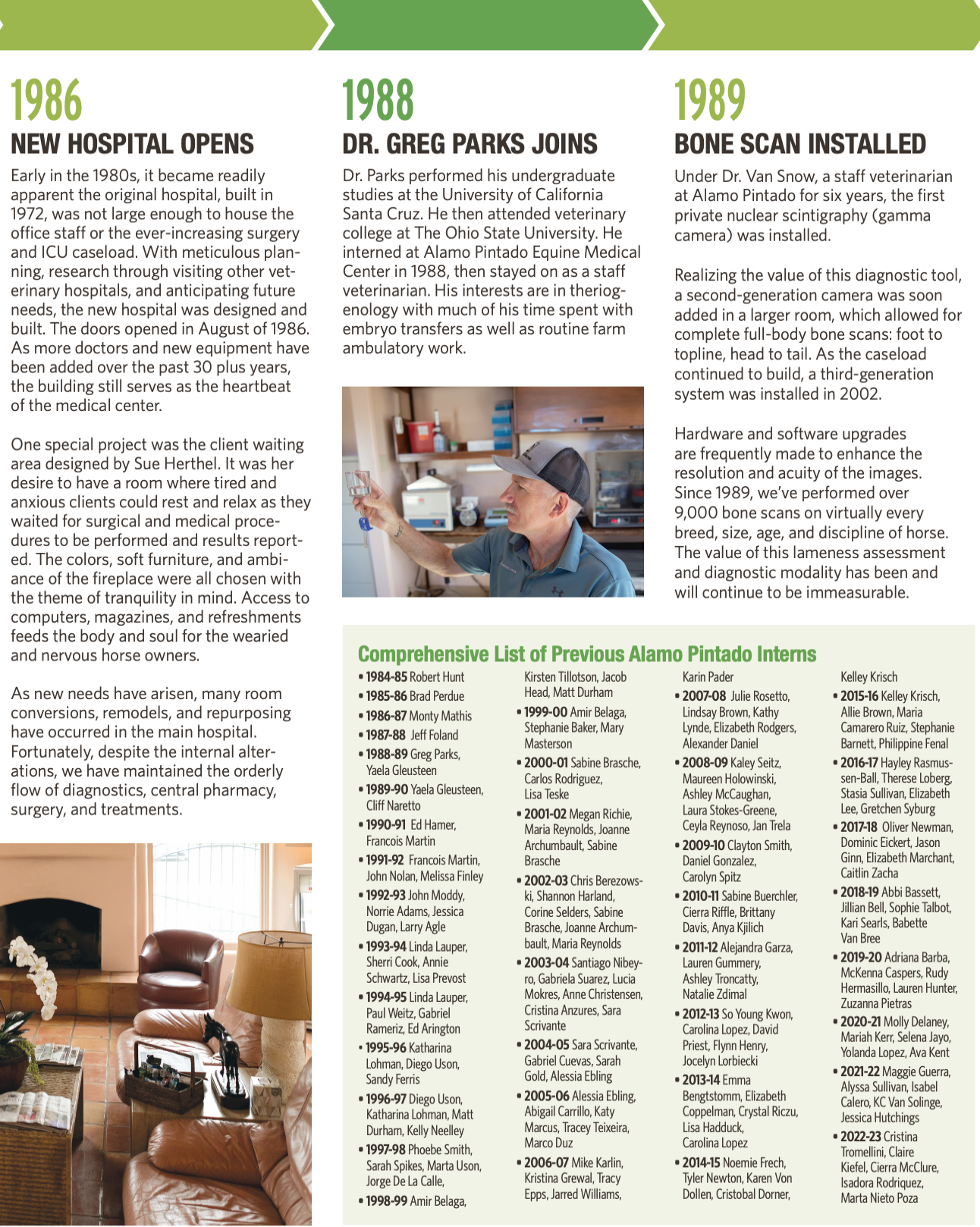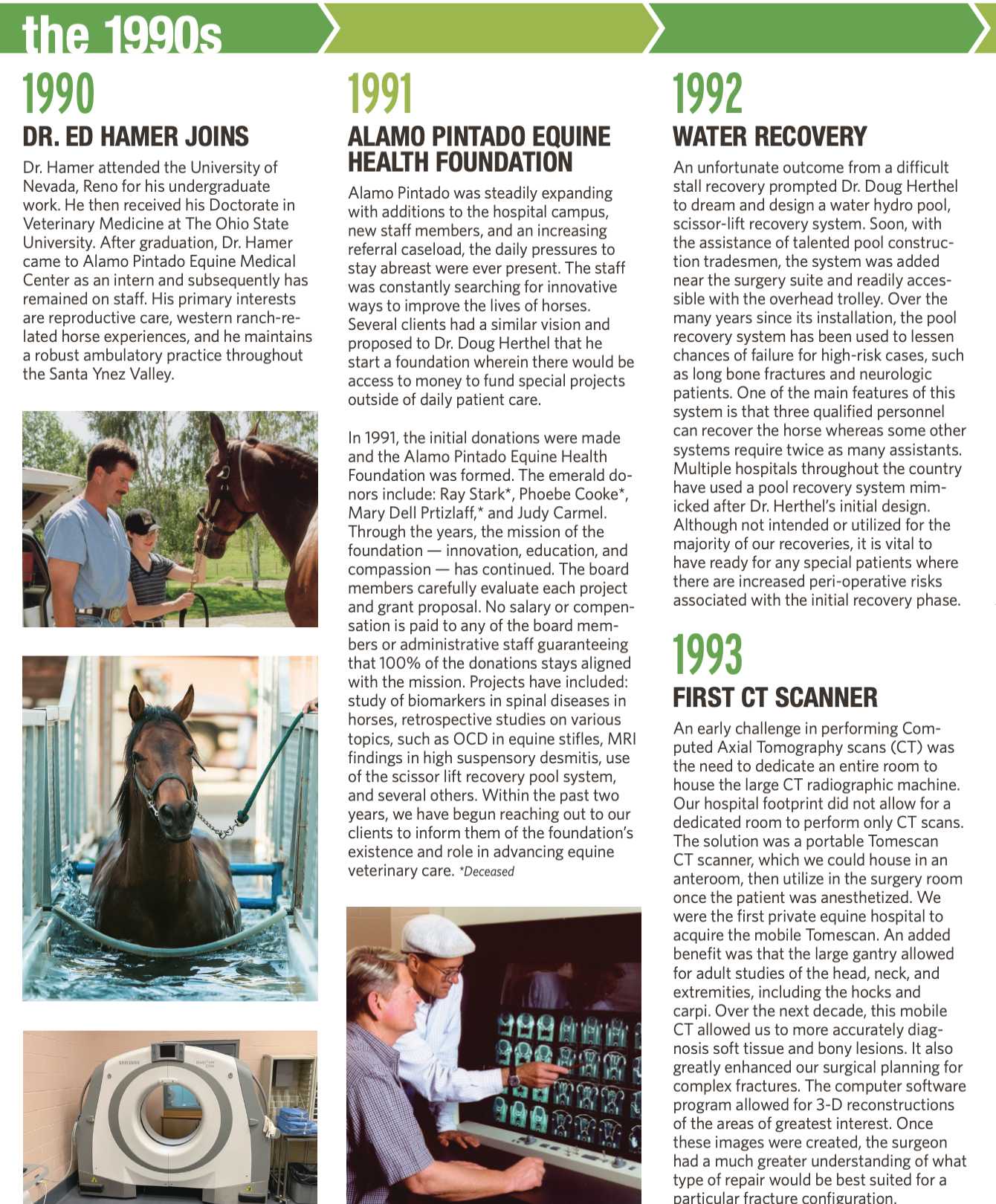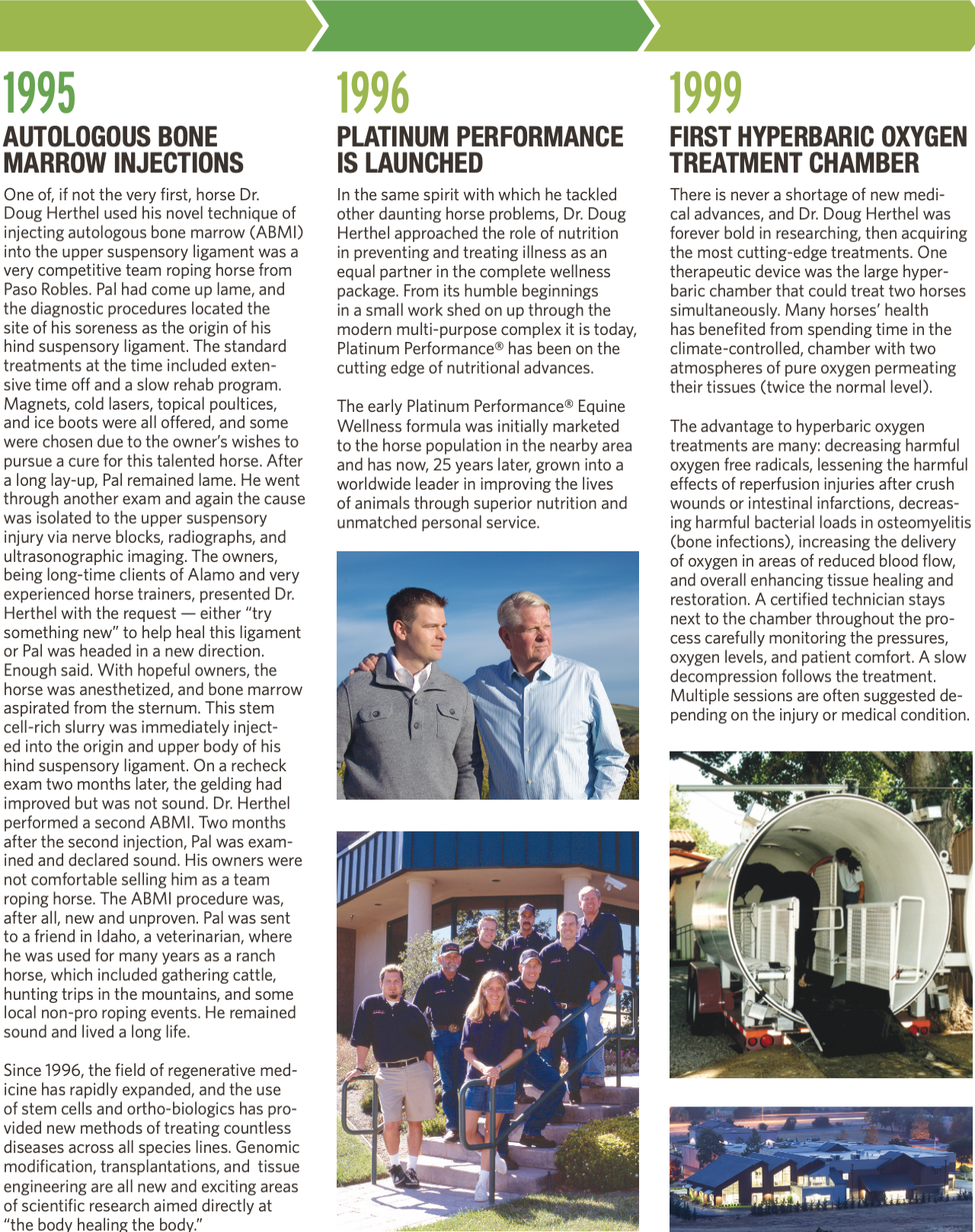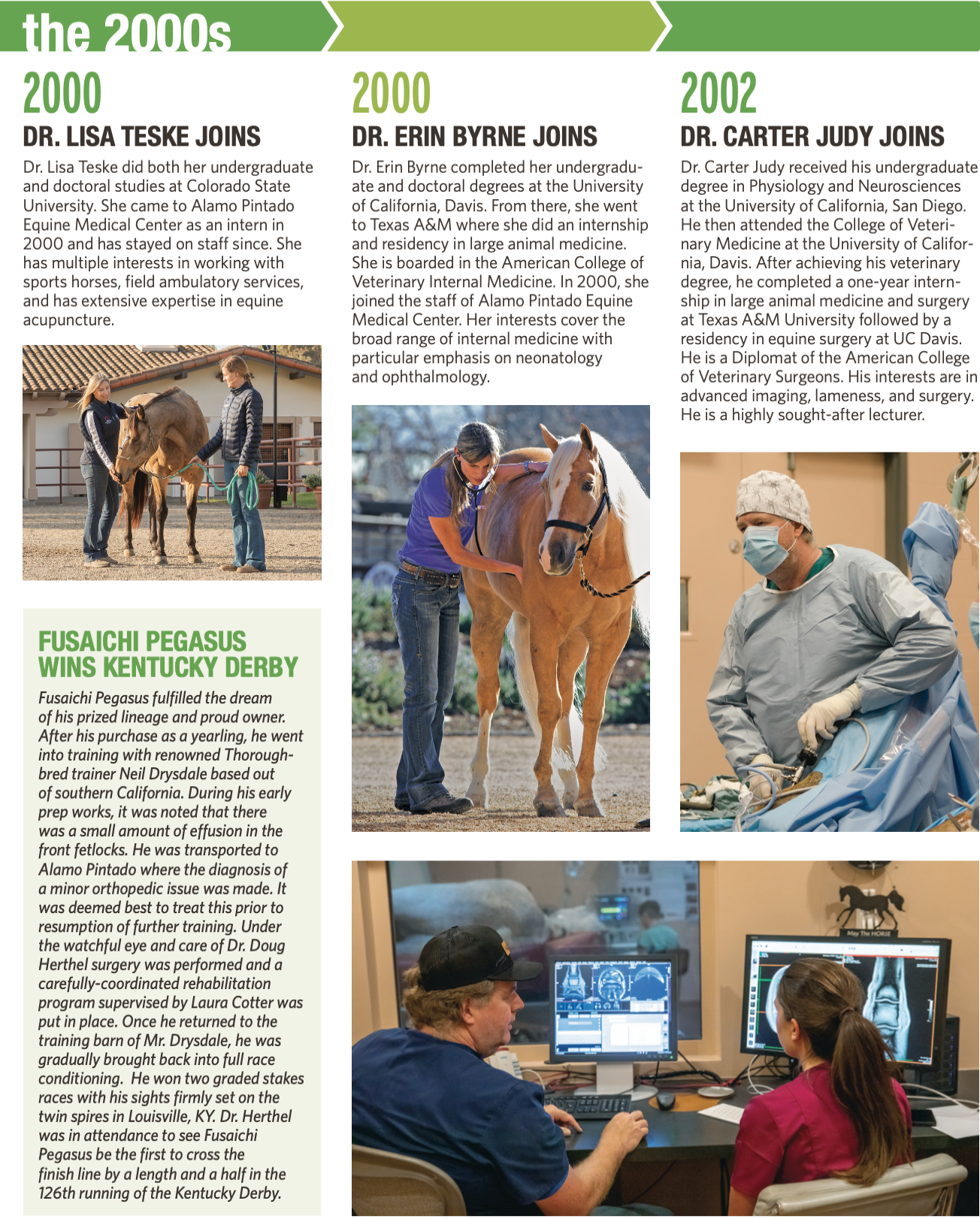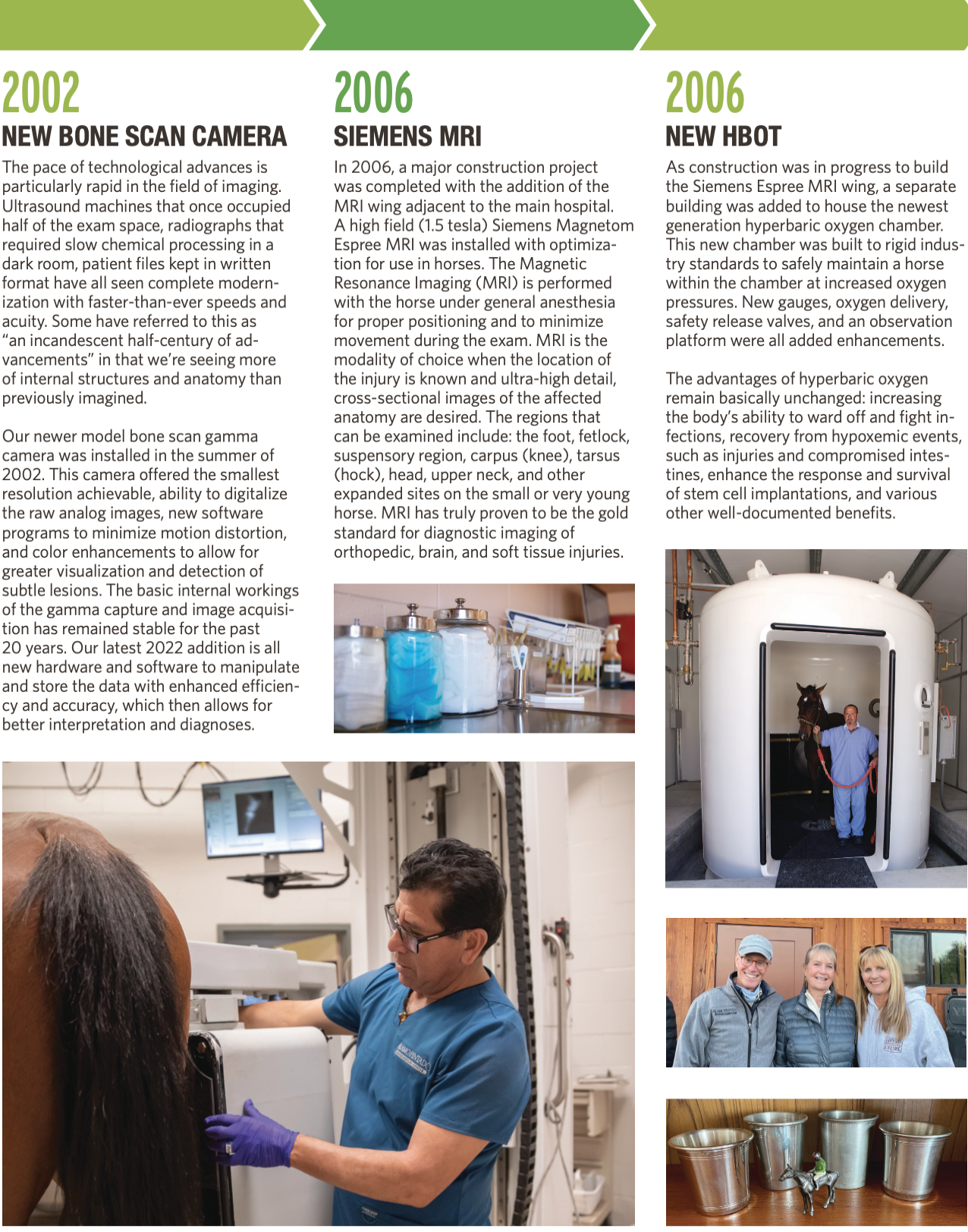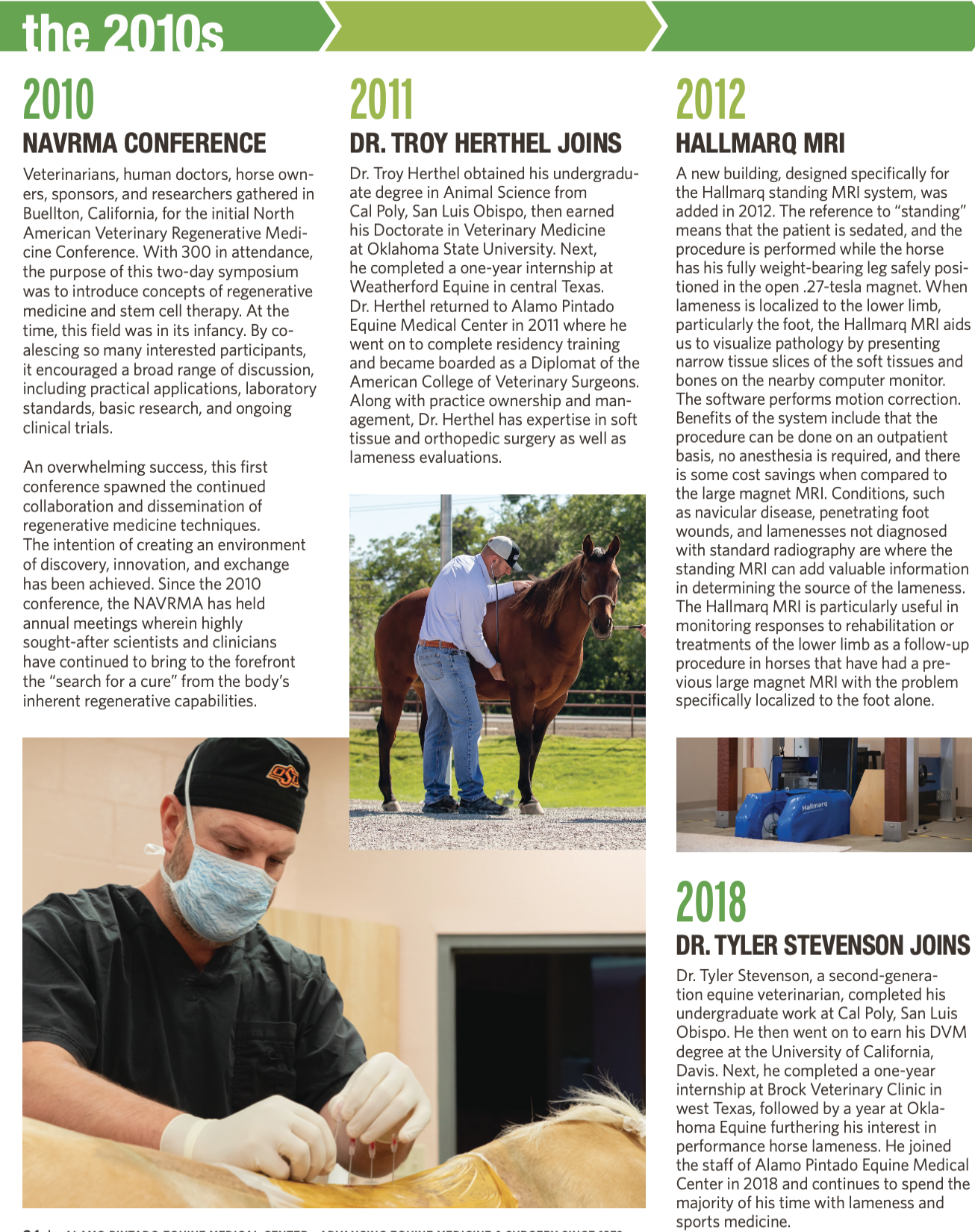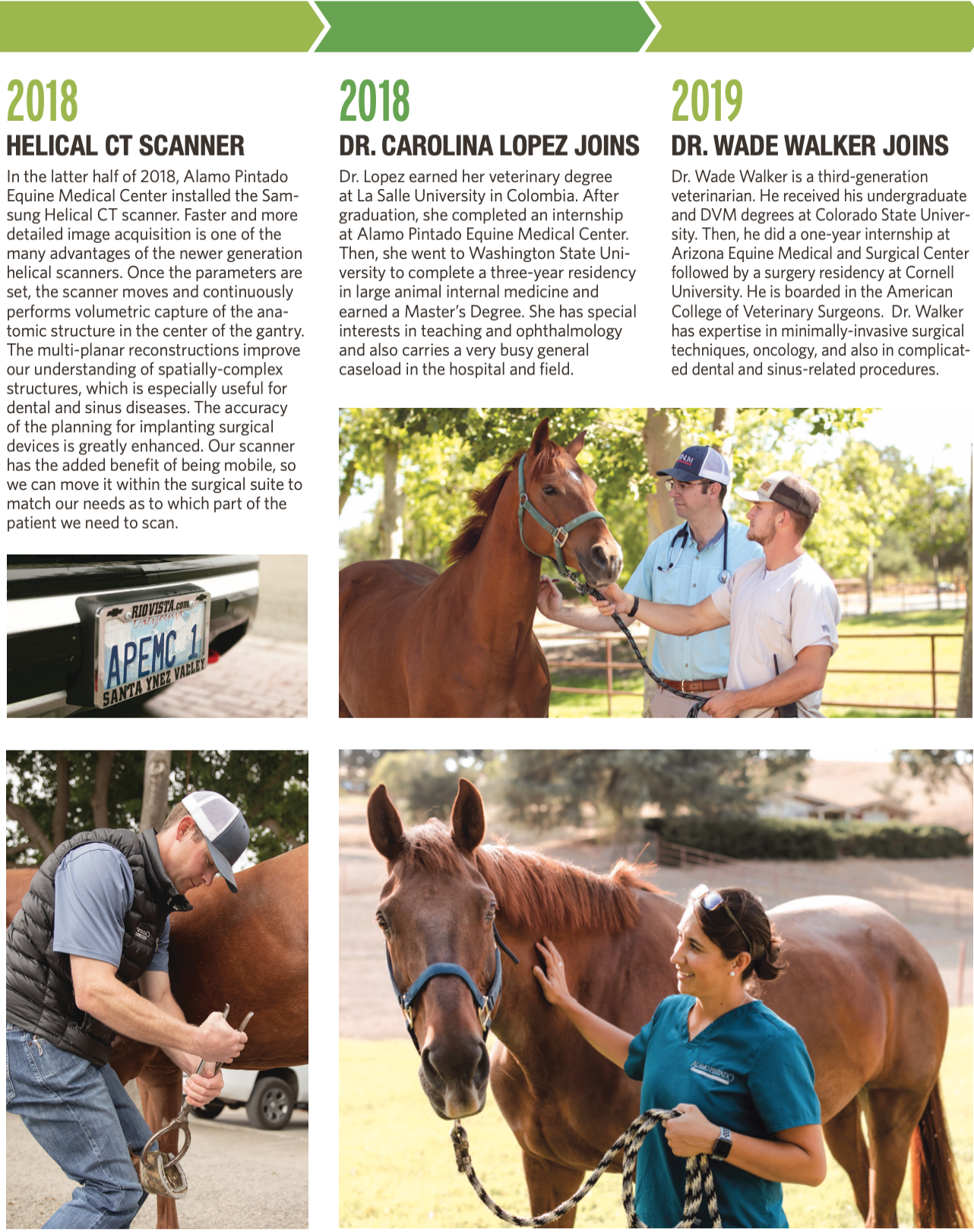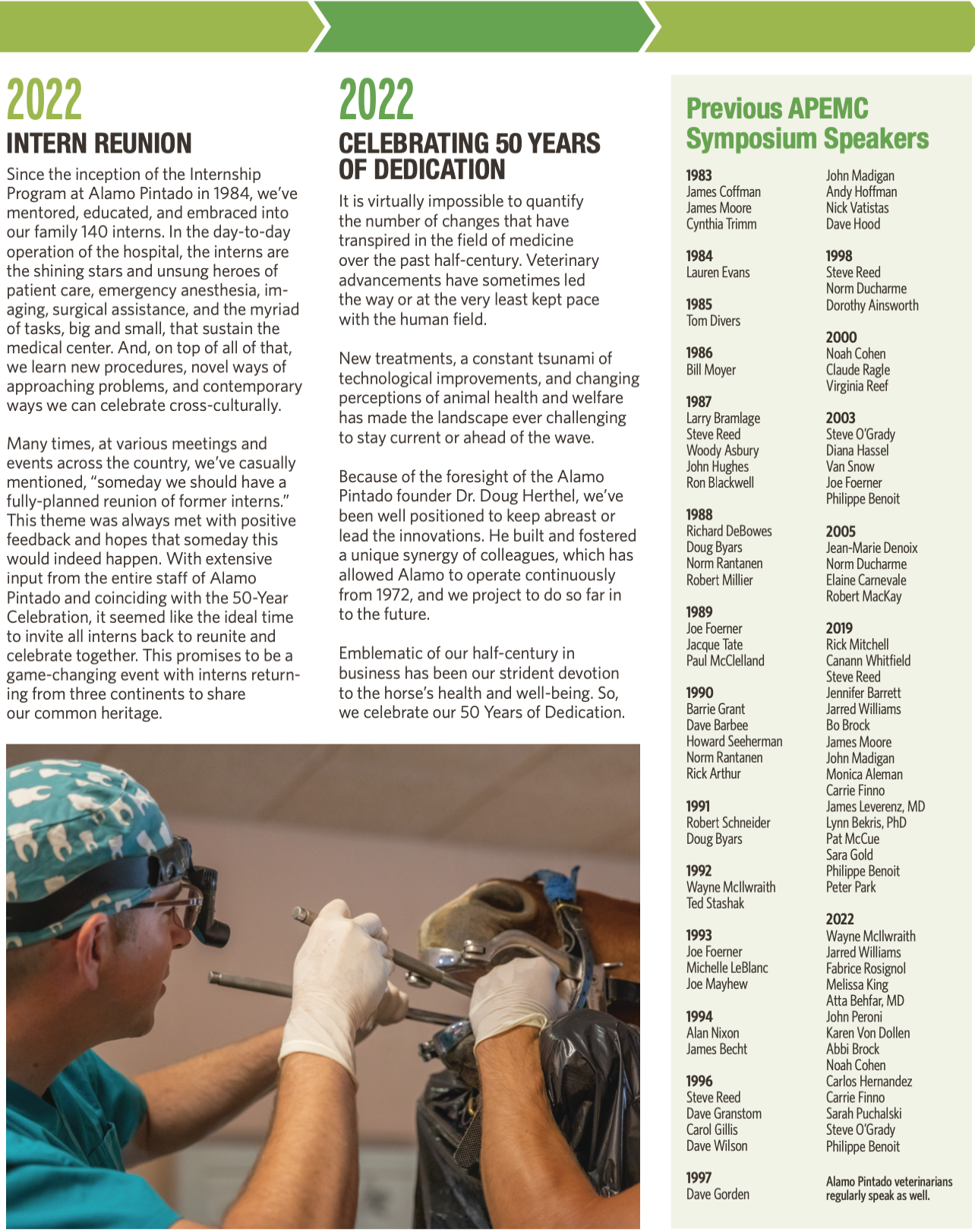From hoof testers to the use of MRI to assess structures of the equine foot, from using a stethoscope to auscultate the chest to applying a radio-transmitted cardiac monitor that continually records the rate and rhythm of the heart at rest and in full exercise, from routine radiographs to the use of computed tomography to construct cross-sectional 3-D images of complex anatomical sites, the use of bio-compatible titanium intra-medullary nails to stabilize long bone fractures, reducing surgical incisions via use of the arthroscope and laparoscope, major advances in anesthesia, improvements in inten- sive-care neonatology, including na- sal oxygen, parenteral nutrition, and selective antimicrobials to markedly increase survival outcomes.
The Parade of Advances Over the Past 50 Years




